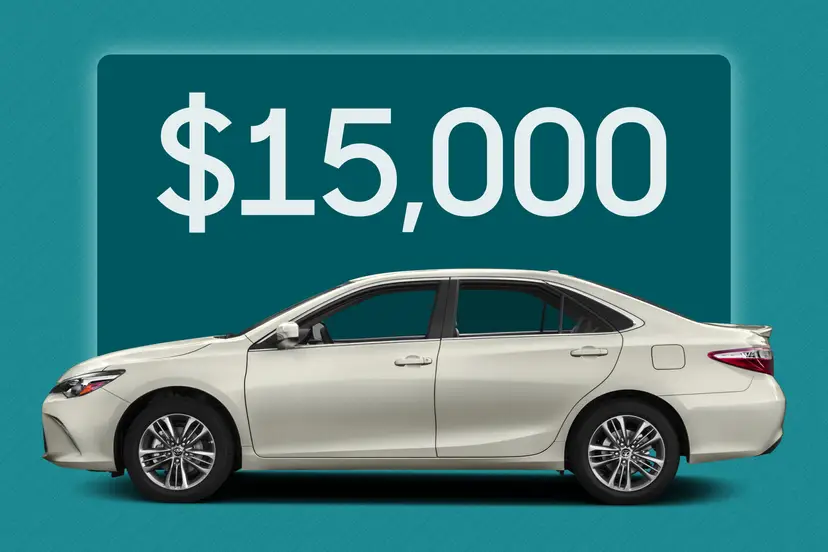
Even in its final model year before a redesign, the 2013 Toyota Highlander is good, solid, basic family transportation — nothing to set the heart aflame, but eminently competent.
Some cars, and Toyotas in particular, often get referred to by automotive enthusiasts as “appliances.” The comparison is made between a Camry and a refrigerator, or a Corolla and a washing machine, for example. The implication (typically less than kind) is that these vehicles have attributes that are less fun and more useful. One wouldn’t take a refrigerator to an autocross, or drag-race a washing machine from a stoplight. But for millions of people around the world, an appliance is exactly what they want in a car — something they don’t have to think about to use, that isn’t quirky or ostentatious, that’s reliable and simple. For those people, many Toyotas are absolutely perfect — and the 2013 Highlander is the pinnacle of such appliancelike, comfortable, utilitarian thinking.
This is the last year for this style of Toyota Highlander, with a new 2014 model on its way that was unveiled at the 2013 New York International Auto Show in March (see the details). Changes from the 2012 model to the 2013 I tested are few (see them compared here). Even so, there’s a lot to like about the current Highlander, which has roominess, power, comfort and utility in droves.
Nothing Fancy, Just Basic Competence
The shape is familiar by now, with fairly aggressive styling that has been copied by several manufacturers. (The brand-new Nissan Pathfinder, for example, looks a lot like this Highlander in many ways.) It’s a clean, flowing design that suffers a bit from wheels that look slightly too small in the base V6 trim level I tested. If you like the way it looks, however, get one now, as the 2014 model will receive a rather significant styling update that’s not to everyone’s liking.
The interior is similarly pleasing. Nothing outrageous, just well laid out, extremely comfortable and made from high-quality materials that have been screwed together well. Up front, the low, soft-touch dash and high seating position combine for a commanding view over the hood, with excellent visibility to the sides and rear as well. Controls on the center control panel are big and clear, with large buttons and chunky knobs that make operating the climate-control system a breeze (sorry). The gauges are bright, clear and easy to read at a glance. There’s nothing remarkable about the shapes and textures in here, but there’s nothing to offend either — unless you’re someone who requires some visual interest in your transportation choice, as there’s none to be found in the endless sea of gray plastic stretching from door to door. At least in the Highlander it’s decent plastic, unlike in some other Toyota products, like the Venza.
Seating is versatile and extraordinarily roomy, especially in the second row, which features astonishing amounts of legroom. This is a three-row SUV, including a fold-down seat for two people in the cargo area, accessible through the fold-and-tumble second-row seats. That third row is wide enough for full-sized adults, but legroom is seriously compromised. This is just a midsized SUV, after all, not a full-sizer like the Toyota Sequoia or Chevrolet Traverse. Folding the second row for entry to the third is easy, with handles atop the seatbacks making for simple operation even by children. Both the second and third rows fold flat, creating a massive cargo space able to hold big, bulky objects.
Interior electronics are basic and not terribly complicated on the entry-level Toyota Highlander (the only major options my test model had were a V-6 engine and all-wheel drive). The standard touch-screen multimedia display is large and easy to use, but a second, smaller screen above it displayed limited vehicle information, as well, with just a handful of displays to choose from. You can option up a Highlander to the hilt with things like Toyota’s Entune (a cloud-based entertainment and information system), a navigation system and more, but my tester had none of that — only satellite radio and a windshield-wiper heater, part of the $60 Cold Weather Package. On the plus side, a lack of features means the interior is uncluttered and uncomplicated. It also means there’s little to do but drive.
Roly-Poly, but Not Pokey
Thankfully, driving the Toyota Highlander is just as pleasant as sitting in or looking at one. In the base model, power comes from a standard 2.7-liter four-cylinder engine making 187 horsepower, but my tester had the optional 3.5-liter V-6 engine, bumping horsepower up to a much more confidence-inspiring 270 hp. In true Toyota fashion, the V-6 is the picture of smoothness, so much so that the only way to know it’s running at idle is to blip the pedal. Hit that same pedal while the Highlander’s in gear, and you’re rewarded with strong, seamless acceleration. A six-speed automatic transmission is standard with the four-cylinder, but the V-6 comes only with a five-speed automatic. A gasoline-electric hybrid version is also available. With the exception of the hybrid, however, the drivetrain overall is a bit behind the times — most competitors are offering six-speed automatics across the range, plus turbocharging or at least direct-injection technology. Thankfully, most buyers will not be aware of any technical deficiency thanks to the Highlander’s buttery operation and effortless acceleration.
What they might notice, however, is fuel economy. Toyota Highlanders with the base four-cylinder engine and front-wheel are rated 20/25 mpg city/highway — not bad for a big seven-seat cruiser. Fuel economy drops to 18/24 for the bigger V-6 engine, and even further, to 17/22 mpg, when you add all-wheel drive. My week with the Highlander returned 19 mpg in mixed driving; not bad, but certainly not class-leading anymore. It falls well short of the new all-wheel-drive Nissan Pathfinder, rated 19/25 mpg, and the new seven-seat Hyundai Santa Fe, which comes in at 18/24 mpg. It also generally matches the much larger Chevrolet Traverse for combined mileage rating (19 mpg), and does 1 mpg better in the city and 1 mpg worse on the highway. The Highlander lineup’s fuel economy champ is the hybrid, rated 28/28 mpg, but that comes at a considerable price premium and with standard all-wheel drive.
The Toyota Highlander is obviously tuned for comfort rather than driving fun. As the suspension is soft, the body motions are tippy and the whole truck rolls and lolls in fast corners. You won’t be doing any spirited driving in this family truckster, but what you get in return is sublime ride quality that’s smooth even over some of the most badly broken pavement, aided by tall sidewalls on the 17-inch tires that soak up bumps with little noise or disruption to your serenity. Hang an iPad on the seatback, and the munchkins won’t be bothered by road conditions in the slightest. Faster highway driving is just as calm and hushed.
Safety
The current Toyota Highlander has been crash-tested by both the National Highway Traffic Safety Administration and the Insurance Institute for Highway Safety. NHTSA rated the Highlander four out of five stars overall, while IIHS gave the Highlander its top rating of Good in all its major tests, earning it Top Safety Pick status. See the results here.
As for equipment, the Toyota Highlander has all the requisite electronic safety measures, like traction control, antilock brakes and an electronic stability system. Front, side, driver’s knee and side curtain airbags are standard. There was no backup camera on my test vehicle, but it’s a $699 option on base models (standard on all other trim levels), a rather glaring omission from the equipment list for a purported family vehicle. See all the Highlander’s safety features here.
Highlander in the Market
The Toyota Highlander V6 all-wheel drive I tested had one notable quality that cannot be overlooked: a comparatively low as-tested price of $33,477, including an $845 destination charge. The starting price for this base V-6 model with all-wheel drive is $32,690, meaning options on my tester were few: only a $60 Cold Weather Package, a $29 first-aid kit, a $49 cargo net and a rather pricey $649 three-row floor mat kit. If you want to skip the V-6 and all-wheel drive, the Highlander with a four-cylinder engine and front-wheel drive starts at $29,865. At the other end of the spectrum is a fully loaded Highlander Hybrid Limited all-wheel drive, which starts at $47,215 — quite a dramatic range.
Midsize SUVs have been taking over for minivans in family-hauling duties, and the number of body-type entries in the field is greater than ever. Requiring seven seats does cut the list down ever so slightly. The Toyota Highlander’s main competitors are the Nissan Pathfinder, Honda Pilot, Chevrolet Traverse/GMC Acadia, Ford Explorer, Hyundai Santa Fe, Mazda CX-9 and Dodge Durango. If you can live with just five seats, add the Jeep Grand Cherokee, Nissan Murano, Ford Edge, Toyota Venza and Kia Sorento. That’s more than a dozen other vehicles to consider, demonstrating how competitive this segment really is. The closest matches are the Pathfinder, Explorer and Santa Fe (not the Santa Fe Sport, mind you, which is a smaller, five-seat model). The Pathfinder features only a V-6 and continuously variable automatic transmission, while the Santa Fe’s seven-seat model offers only a V-6. The Explorer offers two V-6 engines and an optional turbo four-cylinder, all mated to a six-speed automatic transmission. All are comparable in terms of room, price and utility, but the Highlander’s competitors generally have the advantage in fuel economy and on-board technology. See the Highlander compared with major competitors here.
The 2014 Toyota Highlander will finally get a six-speed transmission for its V-6 engine, which should improve fuel economy and acceleration. It also gets seating for eight thanks to a larger cargo area and a wider third-row seat. Engines will carry over unchanged, however, meaning there will still be no direct-injection or turbocharging. The interior and exterior updates look good and should keep the Highlander competitive, and that’s really all Toyota needs to do to keep the Highlander’s sales numbers up — cosmetic changes that keep it fresh in an ultra-competitive market. Toyota already has the utility, comfort, competence and family-friendly parts down pat. Working on its curb appeal and on-board technology will only strengthen the Highlander’s position.







































.png)



